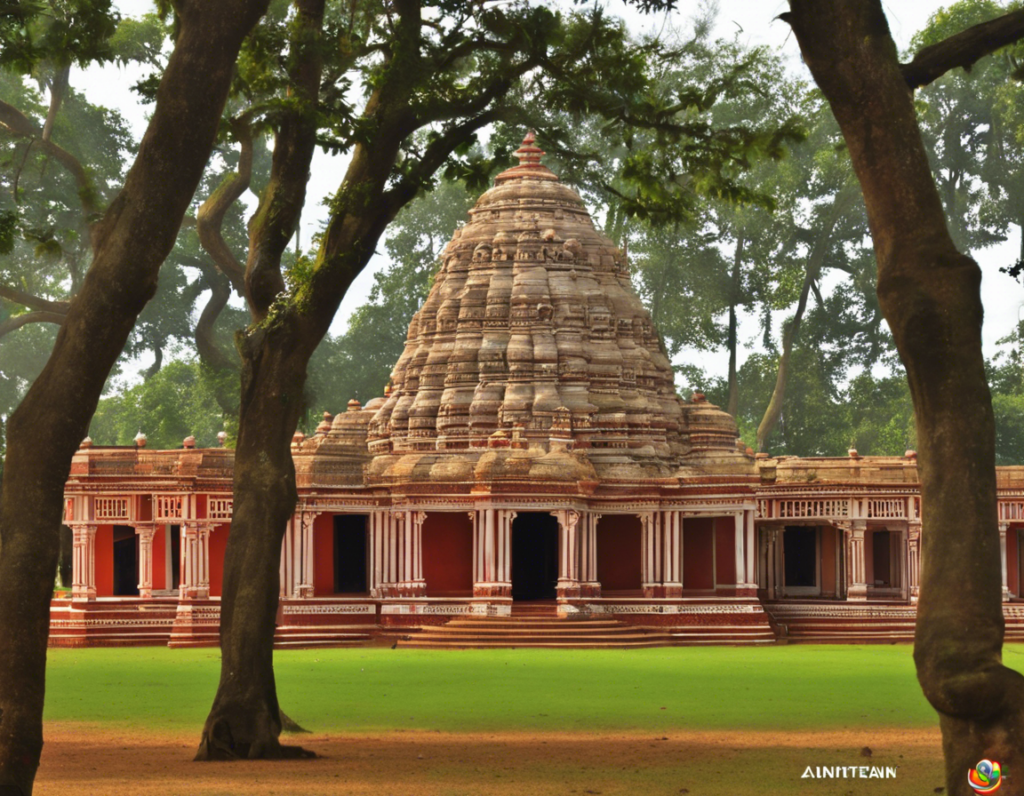Santiniketan, located in the Birbhum district of West Bengal, India, is a place steeped in history, culture, and art. Established by Nobel laureate Rabindranath Tagore, Santiniketan is renowned for its educational institutions, artistic heritage, and serene natural setting. In 2010, it was honored with the title of a UNESCO World Heritage Site, recognizing its significance as a cultural and educational hub.
History of Santiniketan
Santiniketan was founded by Rabindranath Tagore in 1901, with the vision of creating an open-air educational institution that would break away from the traditional, rigid academic structure. Tagore believed in the concept of integrated education that combined learning with nature, arts, and humanity. The Visva Bharati University was later established in Santiniketan in 1921, carrying forward Tagore’s educational philosophy.
Cultural Heritage
Santiniketan is a melting pot of art, music, dance, and literature. The region has been a nurturing ground for stalwarts like Nandalal Bose, Ramkinkar Baij, and Amartya Sen. The Vishwa Bharati University is a hub for various art forms and cultural activities, celebrating festivals like Basanta Utsav (Holi) and Poush Mela with great enthusiasm. The campus is dotted with sculptures, murals, and architectural gems that reflect the rich artistic heritage of the place.
Natural Beauty
The natural beauty of Santiniketan is breathtaking, with vast expanses of greenery, serene water bodies, and rustic red soil. The Khoai region, characterized by eroded landscapes and winding rivers, is a popular spot for nature lovers and photographers. The Amar Kutir handicrafts village showcases the traditional arts and crafts of the region, offering visitors a glimpse into the local rural life.
Educational Institutions
Apart from Visva Bharati University, Santiniketan is home to several schools and colleges that follow Tagore’s educational principles. These institutions emphasize holistic learning, creative expression, and a close bond with nature. Students here engage in a range of activities beyond academics, including Rabindra Sangeet, dance, drama, and fine arts. The Uttarayan complex, with its distinctive architecture and serene surroundings, is a center of academic and cultural activities.
Tourist Attractions
Santiniketan attracts tourists from all over the world who are eager to explore its cultural and natural treasures. The Rabindra Bhavan Museum houses an impressive collection of Tagore’s personal effects, paintings, and manuscripts. The Amra Kunja (Mango Grove) is a tranquil spot where Tagore used to compose his poems and songs. The Chhatimtala is a sacred prayer area beneath a cluster of trees where Tagore meditated and reflected.
Frequently Asked Questions (FAQs)
- How to reach Santiniketan?
-
Santiniketan is well-connected by road and rail. The nearest railway station is Bolpur, which is around 2.5 kilometers away. There are also buses and taxis available from major cities like Kolkata.
-
What is the best time to visit Santiniketan?
-
The winter months from November to February are considered the best time to visit Santiniketan, as the weather is pleasant and ideal for exploring the outdoors.
-
Is accommodation easily available in Santiniketan?
-
Yes, there are several hotels, guest houses, and homestays in and around Santiniketan that cater to different budget preferences. It is advisable to book in advance during peak tourist seasons.
-
Are there any cultural events or festivals to look out for in Santiniketan?
-
Yes, Santiniketan is known for its vibrant cultural scene. Events like Basanta Utsav (Holi), Poush Mela, and Rabindra Jayanti (Tagore’s birthday) are celebrated with great fervor and are worth experiencing.
-
What are the must-visit places in Santiniketan?
- Some of the must-visit places in Santiniketan include the Visva Bharati University campus, Khoai region, Rabindra Bhavan Museum, Amra Kunja, and Chhatimtala.
In conclusion, Santiniketan is not just a destination; it is an experience that immerses visitors in a world of art, culture, education, and nature. Its UNESCO World Heritage status underscores the importance of preserving and promoting the legacy of Rabindranath Tagore and the unique ethos of Santiniketan. A visit to this historic town is sure to leave a lasting impression on all who appreciate beauty, creativity, and a harmonious way of life.
